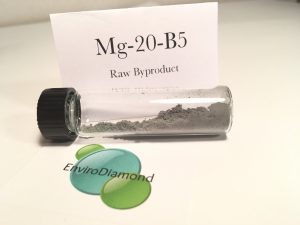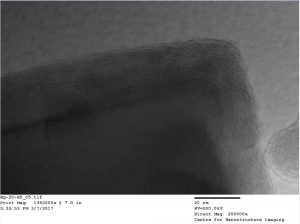Detonations of Carbon Dioxide, Magnesium and Boron


This material is simply remarkable in appearance and behavior. We performed some microscopy work on a sample, which revealed complex polycrystalline particles that are covered in other materials. Detonations with boron have been envisioned to generate boron-doped nanodiamond, which has a valuable electrical effect that is sought after in the microelectronics industry.
We also anticipate the creation of some boron carbide, which is a commonly used superhard abrasive material. Boron carbide, if enhanced by diamond, would likely be quite similar to diamond. Interestingly, as of 2015, boron carbide is the third hardest substance known, after diamond and cubic boron nitride, earning it the nickname “black diamond”.
However, preliminary work with this system uncovered a problematic issue with regards to mixing the ingredients prior to detonation. The mixture becomes fluid-like and resists easy packing, which means we have to investigate other options before pursuing this one. Consequently, ideal detonation with this system is challenging to achieve and needs more research before pursuing it further.
Regardless, we produced some impressive samples and acid digested them first in HCl and then in nitric acid, to remove elemental boron contamination and concentrate the carbon phase. Here is an X-Ray Diffraction analysis of this purified powder:
Most surprisingly, we see that the bulk of this material is spinel, despite not having used aluminum in this system or having conducted previous tests producing spinel in the vessel we used (and cleaned). Producing spinel implies there was aluminum in our system, however, we tested the purity of our magnesium source and determined it cannot be the source of aluminum. The pipes and containment system are all made of carbon steel, so they are also not a viable aluminum source.
Regardless of where the aluminum came from or why we saw spinel, this analytical result gave us the idea to attempt producing spinel by combining aluminum, magnesium and dry ice in the correct proportions. This was tested in July, 2018 and generated a very high spinel yield with some magnesium oxide and varieties of aluminum oxide.
